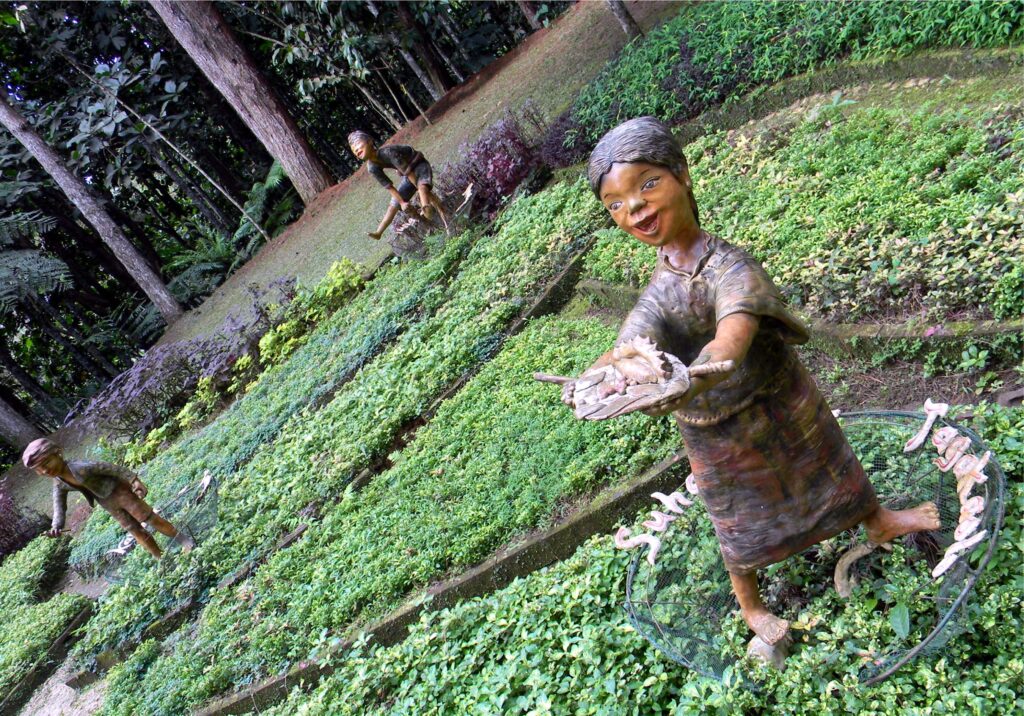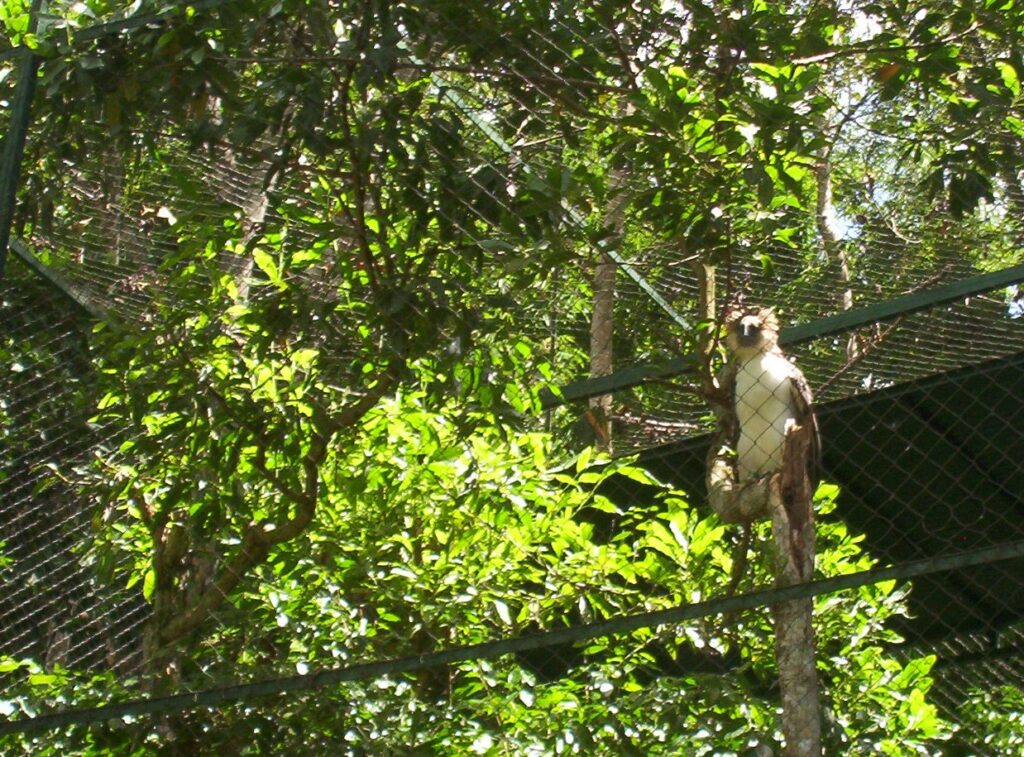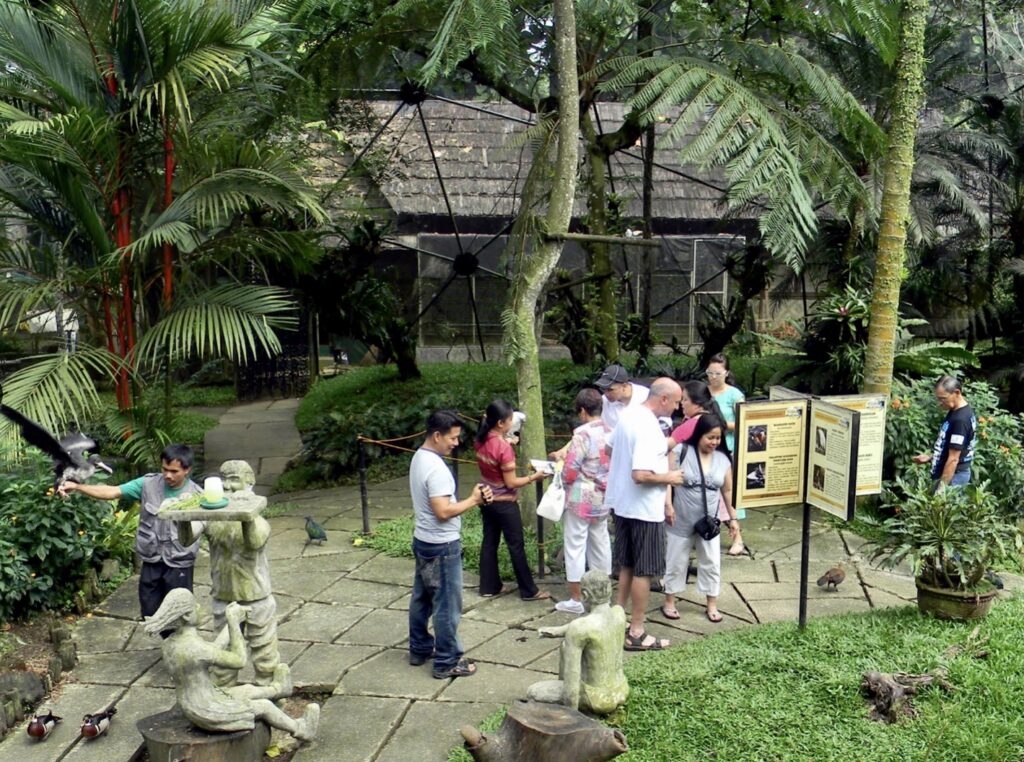DAVAO CITY AS ECOTOURISM DESTINATION
Text and Photos by Henrylito D. Tacio
Davao City evokes delectable fruits (controversial durian, antioxidants-laden mangosteen, seedless pomelo, and sweet-smelling banana), fine beaches (Samal Island is just five minutes away by boat), and religious sites (historic San Pedro Cathedral and the Shrine of the Holy Infant Jesus of Prague).
Unknowingly, Davao is also one of the top ecotourism destinations in the Philippines. The Ecotourism Society defines ecotourism as “purposeful travel to natural areas to understand the culture and natural history of the environment, taking care not to alter the integrity of the ecosystem while producing economic opportunities that make the conservation of natural resources beneficial to local people.”

In a workshop conducted at Los Baños, Laguna some years back, ecotourism is defined as “an environmentally sound tourism activity in a given ecosystem yielding socio-economic benefits and enhancing natural and cultural diversity conservation.”
Actually, ecotourism refers to the business of nature travel. Its main focus is environmental awareness and activities range from purely educational (such as studying ecosystems), hobby-oriented (like photo expeditions into exotic habitats), or thrill-seeking (mountain climbing comes to mind).
Davao has four ecotourism attractions and most of them are for educational purposes. These are: the Philippine Eagle Center (the only one in the country), Malagos Garden Resort, Eden Nature Park, and Davao Crocodile Park. Each has unique ecosystems and different come-ons.
Let’s discover each of them. Some 30 kilometers northwest and about an hour’s ride from downtown Davao, the Philippine Eagle Center is the transient home of the country’s national bird. Here, visitors will several male and female eagles being induced to breed in captivity.
Don’t fail to see the first tropical eagle conceived through artificial insemination. The bird was given the name Pag-asa (the Tagalog word for hope). “Pag-asa connotes hope for the continued survival of the Philippine eagle, hope that if people get together for the cause of the eagle, it shall not be doomed to die,” said Dennis Salvador, the executive director of Philippine Eagle Foundation (PEF).
PEF manages the eagle center. A private, non-stock organization, it is dedicated to saving the endangered bird. “By using the Philippine eagle as the focal point of conservation, we are, in the process, saving wildlife and their habitat,” said Salvador.

The eagle center has been doing its best to educate the Filipino people as to the importance of the bird and its habitat. Its facility was actually opened to the public in 1988 to raise awareness among those who visit the center. Majority of its visitors are children on school-sponsored field trips.
“Many of these children came from all over Mindanao,” Salvador said. “We use the opportunity in telling them the importance of wildlife conservation. Our mode of dissemination ranges from providing lectures, slide and film presentations, to guide tours.”
Foreigners and adults also visit the center. “Knowing what they are doing and how the birds are faring is one of the highlights of my visit to Davao,” said Melvin O. Uy Matiao, an information technology specialist from Dumaguete, after his visit to the eagle center.
Not far from the Philippine Eagle Center is the Malagos Garden Resort. Travel time from the metropolis is about 30 minutes. Originally part of an orchid farm that grows the world renowned waling-waling orchid and other exotic plants, the site was later redeveloped to become an ecological center as well as a getaway for city dwellers.
Today, Malagos Garden Resort offer visitors myriads of orchid varieties, exotic plants, tropical fruit trees, which may be available for picking, and a bird park that houses several endemic species. An environmental conservation center is also located within the vicinity where the Amazing Bird show is held every afternoon for the purpose of entertaining as well as educating visitors in the park.
There’s more. At the Petting Zoo, you get a glimpse of donkeys, miniature horses, goats, sheep and other farm animals. All these will surely give both children and adults lots of educational fun. Not to be missed is the heavenly butterfly sanctuary, which houses more than 70 different kinds of butterflies. Once you enter the place, you will have the opportunity of watching butterflies floating if not wrapping around you.
Eco-trailing, horseback riding, biking, swimming and other adventure games are also some of the available amenities within the premises of the Malagos Garden Resort. I had been to the place twice and it was worth each trip.
You can find Eden only in the Holy Bible. But in Davao, there is such thing as Eden Nature Park, a beautiful man-made resort nestled at the foot of Mount Talomo in Toril. Its brochure said: “It is truly a testament to how man’s ingenuity and concern for the environment can create a paradise on earth, making Eden a must-visit ecological tourist destination in the Philippines.”
At 2,650 feet above sea level, Eden Nature Park offers breath taking views of Davao City and the Davao Gulf. “This place was remnant of logging concessionaires in the 1970s and was covered only by a blanket of wild grass,” our guide said during our tour.
We were told that Jesus V. Ayala, owner of the place, saw the potential of the place in 1971. So, he instructed his people to make terraces carved out of the mountain slope. As this developed, thousands of pine trees seedlings were planted to revitalize the area. Bamboos, which are native to the place, were left to flourish.
Years later, growing pine trees created canopies, allowing other trees and plants to grow and create secondary forest.
Today, there are over 100,000 pine trees spread in about 80 hectares, making the resort 95-percent man-made. Today, the once-barren piece of land provides a relaxing alternative to the bustling city life with its cool weather and unpolluted air. Some visitors who had been to the place suggest bringing a jacket if you plant to stay past five in the afternoon.
If you enjoy hiking, you can follow the mountain trail the resort has created. Carved along towering trees, creeks and boulders, it is an experience of a real adventure and a test of endurance and determination to finish the entire course. “Be in touch with the sights and sounds of nature as you walk along the 4-kilometer trail,” the brochure said.
Going back to the city, proceed to Maa Diversion Road and visit the Davao Crocodile Park. With about 700 crocodiles, the park is making waves as one of Davao’s popular tourist spots. “The park is an establishment that showcases a state-of-the-art crocodile farming system in the Philippines,” says Philip ‘Sonny’ Dizon, the owner of the park. “It has the most recent crocodile farm design equipped with modern facilities and equipment.”
Actually, the park is more than just a crocodile farm; it also houses other kinds of animals and plants. As one visitor observes, “Although the park is not a full-pledged zoo, it is one of the few places in the city where children and adults can learn more about the rich flora and fauna of the region and the rest of the Philippines.”
As soon as you enter the park, you would be greeted by colorful birds of all kinds: eagles, parrots, and lovebirds. Many are placed in cages but there are birds that are merely tied to their bird houses. If you are a bird lover, you would surely enjoy the experience. Of course, you’d also find snakes, monkeys, and freaky lizards, too.

Just like in Malagos Garden Resort, Davao Crocodile Park has also its own version of butterfly haven. Upon entering the Butterfly House, you will see butterflies flying around, crawling on the floor, drinking water on festive plates, and even mating! The brochure says it all: “Learn the notable and unusual life cycle of a butterfly – from larval caterpillar stage to spectacular metamorphosis into a familiar and colorful winged adult form.”
If ecotourism is your thing, then these places is another reason for you to visit Davao City.

